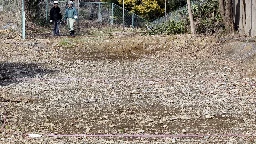A mysterious pile of bones could hold evidence of Japanese war crimes, activists say
A mysterious pile of bones could hold evidence of Japanese war crimes, activists say
Bones dug up from a wartime Army Medical School site in Tokyo decades ago and linked to victims of human experiments by Unit 731, Japan’s germ and biological warfare outfit, remain in a repository still waiting to find their home.

TOKYO (AP) — Depending on who you ask, the bones that have been sitting in a Tokyo repository for decades could be either leftovers from early 20th century anatomy classes, or the unburied and unidentified victims of one of the country’s most notorious war crimes.
A group of activists, historians and other experts who want the government to investigate links to wartime human germ warfare experiments met over the weekend to mark the 35th anniversary of their discovery and renew a call for an independent panel to examine the evidence.
Japan’s government has long avoided discussing wartime atrocities, including the sexual abuse of Asian women known as “comfort women” and Korean forced laborers at Japanese mines and factories, often on grounds of lack of documentary proof. Japan has apologized for its aggression in Asia, but since the 2010s it has been repeatedly criticized in South Korea and China for backpedalling.
Around a dozen skulls, many with cuts, and parts of other skeletons were unearthed on July 22, 1989, during construction of a Health Ministry research institute at the site of the wartime Army Medical School. The school’s close ties to a germ and biological warfare unit led many to suspect that they could be the remains of a dark history that the Japanese government has never officially acknowledged.
You're viewing a single thread.